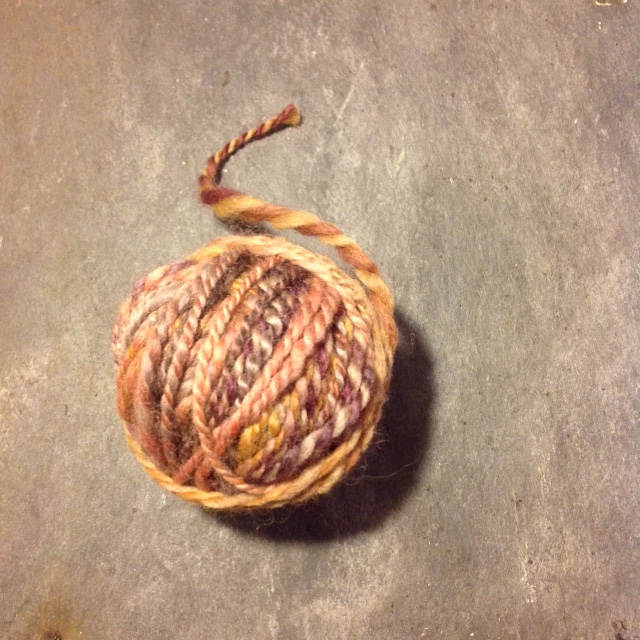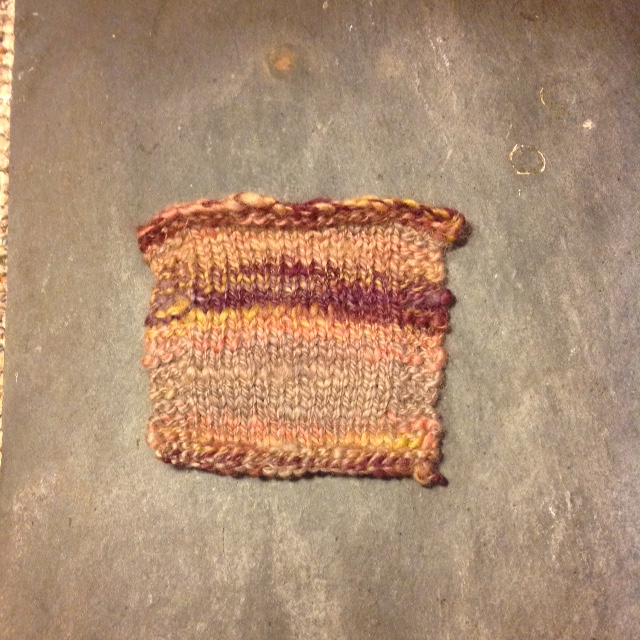If you’ve spun for years you will be very familiar with spinning thinly as the go to method when you want to zone out, watch TV or generally spin without thinking. And although everyone will say this to you as a beginner, once you reach the Holy Grail of fine yarn it is very difficult to go back to spinning a thicker yarn consistently.
It can be easy to get stuck in a spinning rut. We find our comfort zone, our favourite fibre, drafting technique, wheel and we just stay right there. We’re not alone in this regard. How often have you seen on the Great British Bake Off, Sewing Bee, X Factor, people who are excellent at one area of their craft only to fail miserably when asked to bake bread instead of cake, sew on silk or sing a song which is wildly outside their comfort zone.
This is the reason why I dither over whether to attempt the Weavers, Spinners and Dyers Certificate of Achievement. Participants are tasked with preparing, carding and spinning various breeds fleeces, creating a portfolio of examples which show your creativity and detailed records. This would certainly push any spinner out of their comfort zone with an organised plan and a deadline to meet – although there is plenty of time to accomplish the whole thing. It’s that commitment that holds me back. I can’t be sure I would see it through.
So with that in mind, I bought Jill Moreno’s book Yarnitecture – A Knitters Guide to Spinning: Building Exactly the Yarn You Want. It’s a fantastic book and I would wholeheartedly recommend it. She goes through the building of a yarn as an architect would a house, creating it from the ground up, helping you to think outside your little comfort zone and get the best out of your spinning.
So I was inspired to try something new and began with Drafting against Type. I decided to take some top and spin it woollen and see what happened. Woollen spinning has always been a mystery to me and having been told that you cannot spin woollen if it’s top ( and even if you could it wouldn’t be right) I didn’t really attempt it. Why didn’t I? Well Jill said you can and so I did.

It’s not perfect by any means but I very much enjoyed spinning with a different technique. It’s strange because when I’ve attempted spinning woollen before I’ve given up because 1) people told me it was hard 2) because I tend to spin with top and people told me it wasn’t possible or worth it.
What a lesson learned. I need to not take everything people tell me as gospel and also be careful what I say to other spinners, I could be putting them off techniques that they will love.


This is the top spun woollen and I hope you can see it’s slightly fuzzy, with the fibres showing more. This would produce a lofty yarn, with air trapped within the fibres making it a warmer garment once knit.

This is the top spun worsted, you can see the stitch definition is clear and there aren’t as many fibres floating around. The resulting knit would be more compact.
So I’m going to push my boundaries a little and see what happens. Its gone well so far.







































